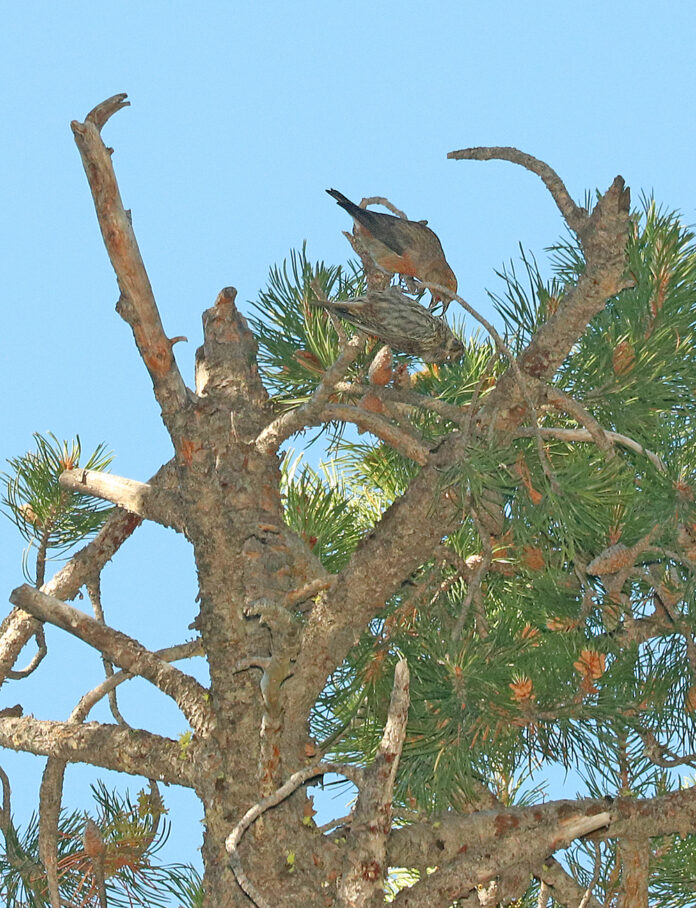
BY LARRY BARNES
The staccato rattle of the red squirrel is missing from the lodgepole forests south of Twin Falls, and that has made all the difference. As the land dried up after the last glacial period, great treeless expanses formed a barrier for the passage of red squirrels—a place of starvation, a talon to the heart, or a canine to the skull. Should the squirrels somehow make the journey through the treeless sagebrush steppe, they would be like Polynesians discovering Hawaii. The squirrels would find paradise, a forest of easily harvested cones and bountiful springtime eggs to eat from the many birds there that never had to worry about marauding, egg-eating tree squirrels.
In the squirrel-free ~27 square miles of the South Hills and Albion Mountains, twice as many birds breed compared to nearby similar habitats that echo with squirrel chatter. And one bird species, the red crossbill, is 20 times as common.
Red crossbills occur across the northern portion of Earth wherever there are coniferous forests. In North America there are 10 “types” identifiable by the size of their bill, the species of cones they prefer, and the distinctive calls they make in flight. Red crossbills are an “irruptive” species, roaming about their regions in search of the most bountiful cone crops. “Type 9,” however, is not nomadic and had been known as the South Hills crossbill.
Dr. Craig Benkman from the University of Wyoming is unraveling crossbill ecology and his work has resulted in a big surprise in the ornithological world—a new species. The informal South Hills crossbill is now its own species, the Cassia crossbill, Loxia sinesciurus, which means “crosswise without squirrels.” Here’s how the Cassia crossbill came to be a species.
Lacking competition with red squirrels, there is a surplus of cones that the crossbills have to themselves. The lodgepole pine cones here have evolved to be larger as a defense against the crossbills, who naturally have countered by evolving larger bills in an evolutionary arms race with the trees. The Cassia crossbills are uniquely adapted to efficiently unlock the cone scales and extract the nutritious seeds with a deft leveraging movement of their beak and tongue. Other nomadic types of crossbills sometimes visit the region, but, having bills an average of just 0.7 mm smaller than the Cassia crossbill, they don’t enjoy the success of their resident kin. And the transient crossbills mate with the resident Cassias less than one percent of the time. These facts point toward the Cassia crossbill’s unique standing, a fact now corroborated by DNA.
Idaho’s only endemic bird species faces an uncertain future, which is often the case when one’s range and diet are so restricted. Lodgepole pine cones are often serotinous, which means they open and drop their seed with a fire’s heat. But the cone’s serotinous nature is a continuum. If the temperatures are above 90 degrees for a few days, some of the seeds fall to ground, reducing the food available to the birds by about 20% in the following four years.
With increasing fire frequencies and temperatures, the long-term prospects for lodgepole forests and Cassia crossbills in the South Hills are poor. Some predict the end of these forests, and its “new” species, in just 60 years.
Larry Barnes retired from 26 years as a biology teacher at Wood River High School and is now transitioning to full-time amateur exploration of the natural world.
